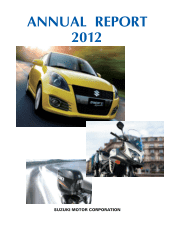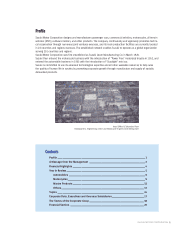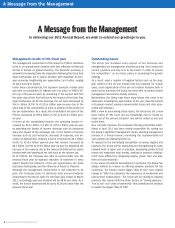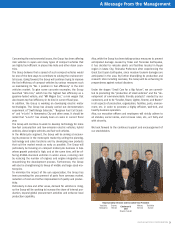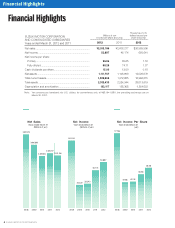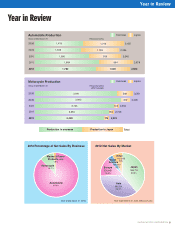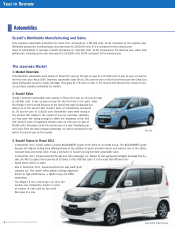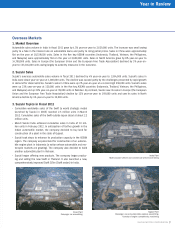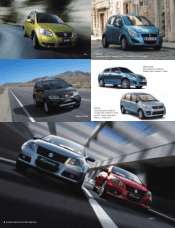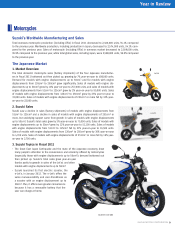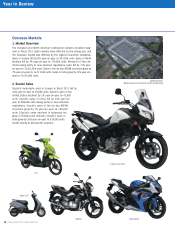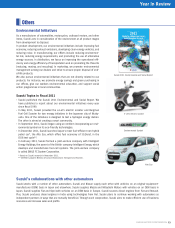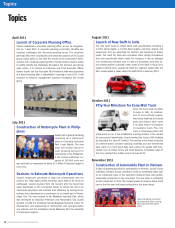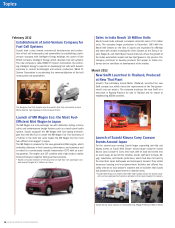Suzuki 2012 Annual Report Download - page 8
Download and view the complete annual report
Please find page 8 of the 2012 Suzuki annual report below. You can navigate through the pages in the report by either clicking on the pages listed below, or by using the keyword search tool below to find specific information within the annual report.
6 SUZUKI MOTOR CORPORATION
Alto Eco
Total overseas automobile production for scal 2011 decreased to 1,782,000 units, 94.6% compared to the previous year.
Worldwide production, including Japan, also decreased to 2,802,000 units, 97.4% compared to the previous year.
Sales of automobiles in overseas markets decreased to 1,964,000 units, 95.6% compared to the previous year, while total
global sales, including Japan, also decreased to 2,560,000 units, 96.9% compared to the previous year.
Total domestic automobile sales volume in scal 2011 was up 3% year-on-year at 4,753,000 units. It was up year-on-year for
the rst time since scal 2009. Domestic automobile sales fell by 24% year-on-year in the rst half because the Great East
Japan Earthquake caused a supply shortage. They grew by 37% year-on-year in the second half because the revival of eco-
car purchase subsidies revitalized the market.
Suzuki’s domestic automobile sales volume in scal 2011 was up 1% year-on-year
at 596,000 units. It was up year-on-year for the rst time in six years. Sales
fell sharply in the rst half because of the Great East Japan Earthquake but
picked up in the second half. Suzuki’s sales of minivehicles decreased
by 1% year-on-year to 516,000 units. Minivehicle sales were strong in
the second half owing to the revival of eco-car purchase subsidies,
but they were not strong enough to oset the slowdown of the rst
half. Suzuki’s sales of registered vehicles were up 19% year-on-year at
80,000 units. They were up for the second year in a row. Underlying sup-
port came from the Solio compact passenger car, which continued to sell
well in its second year on the market.
• In November 2011, Suzuki added a special BLACK&WHITE grade of the Solio to its model lineup. The BLACK&WHITE grade
became the highest-selling Solio oering thanks to the addition of youth-oriented interior and exterior trim to the Solio’s
compact body and roomy cabin. It was a key factor in Suzuki’s strong domestic automobile sales.
• In December 2011, Suzuki launched the Alto Eco mini passenger car. Thanks to fuel-saving technologies developed by Su-
zuki, the Alto Eco gives fuel economy of 30.2km/L in the JC08 test cycle. It is the most fuel-ecient non-
hybrid petrol vehicle in Japan.
• Also in December 2011, Suzuki launched the new Swift Sport
compact car. This model oers greater driving enjoyment
thanks to high performance, a lighter body, and stier
suspension.
• The Wagon R mini passenger car was the
number-one minivehicle model in terms
of number of units sold for the ninth
scal year in a row.
Automobiles
Solio BLACK & WHITE grade

